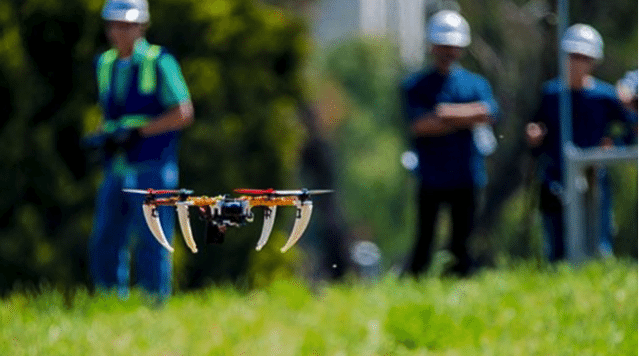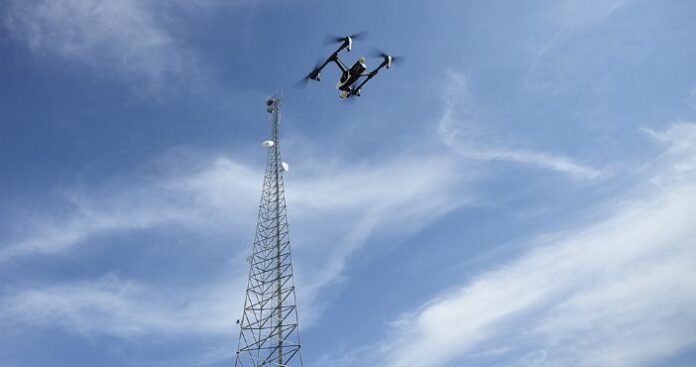FAA approval allows Qualcomm to test drones in real-world, mixed environment
Some 5G use cases—enhanced mobile broadband and massive machine-type communication—are well articulated and in the pipeline. Other 5G applications, including those that could usher in a fourth industrial revolution brought about through automation and robotics, are still taking shape.
Drones are a poignant example of existing technology that can leverage 4G networks now, and 5G networks soon, to take on a wide variety of tasks and bring new efficiencies and savings to a wide swatch of industries and enterprises.
Beyond drone-based delivery, use cases range from first aid and time-sensitive organ transplant delivery to precision agriculture and oil spill monitoring. When the ultra-high reliability and incredibly-low latency of 5G come into the picture, these tasks can become autonomous with swarms of AUVs communicating and adjusting behavior through real-time data inputs and sharing.
As drone R&D goes on, Qualcomm announced ahead of CTIA Super Mobility 2016 in Las Vegas it will work with AT&T to use the carrier’s LTE network for drone trials that will help analyze how drones can operate safely and more securely on commercial LTE networks, which will, in turn, help with 5G technology developments.
“LTE connectivity has the potential to deliver optimal flight plans, transmit flight clearances, track drone location and adjust flight routes in near real-time,” said AT&T’s Chris Penrose, VP for “internet of things” solutions. “Solving for the connectivity challenges of complex flight operations is an essential first step to enabling how drones will work in the future.”
As these new drone applications take shape, it’s important to keep the safety concerns associated with advanced drone research and development top of mind. That’s why Qualcomm worked with the U.S. Federal Aviation Administration on a certification of authorization allowing for drone testing up to 400 feet above ground level around the company’s San Diego, Calif., headquarters where the trials with AT&T will take place. In addition to proximity to extensive R&D facilities, the authorization allows for testing to go on in Class B restricted airspace covering an urban area that includes the San Diego International Airport and its air traffic control mechanisms, as well as other conditions a drone may face including commercial zones, populated residential areas and uninhabited areas. Combined, these conditions make the flight center location one of the most challenging real-world testing environments possible.

While LTE may be suitable for unmanned aerial flights, the next generation of wireless technology may actually be designed with drones in mind. Qualcomm believes its tests will help inform 5G standards bodies.
“The results can help inform positive developments in drone regulations and 5G specifications as they pertain to wide scale deployment of numerous drone use cases,” said Matt Grob, EVP and CTO at Qualcomm.
“The trial with a carrier with the reach and technology of AT&T is a significant step in the development of connectivity technologies for small unmanned aircraft systems (SUAS), including optimization of LTE networks and advancement of 5G technology for drones,” Grob said. “Not only do we aim to analyze wide-scalable LTE optimization for safe, legal commercial SUAS use cases with beyond line-of-sight connectivity, but the results can help inform positive developments in drone regulations and 5G specifications as they pertain to wide-scale deployment of numerous drone use cases.”
Qualcomm’s drone research focuses on two major areas: wireless connectivity and on-board intelligence. For 30 years, Qualcomm has been accelerating mobile innovations. As with 3G and 4G, Qualcomm is now optimizing 4G LTE systems and advancing 5G technologies for wide scale deployments of UAVs. The ability to fly beyond an operator’s vision will help enable a growing set of drone use cases from successful delivery to remote inspection and emergency services. Qualcomm’s research is not only focused on connectivity, but also bringing new levels of compute and intelligence that will be required for safe drone operation. Qualcomm is at the forefront of bringing new levels of on-board intelligence for autonomous drones through the advanced research in computer vision, machine learning, sensor processing, precise GNSS localization, obstacle avoidance, autonomous visual navigation, and 4K videography, as well as with Qualcomm Snapdragon Flight drone development. For more information, click here.

